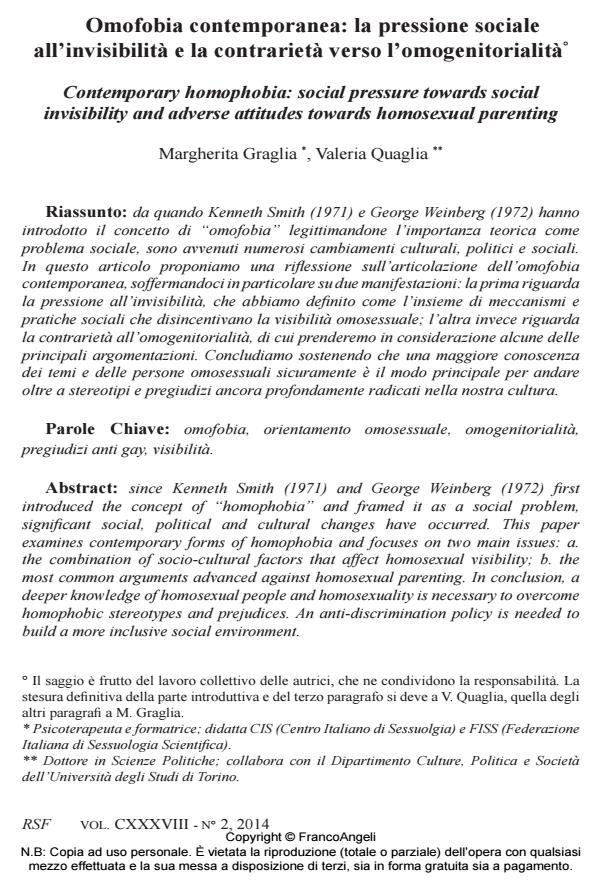Contemporary homophobia: social pressure towards social invisibility and adverse attitudes towards homosexual parenting
Journal title RIVISTA SPERIMENTALE DI FRENIATRIA
Author/s Margherita Graglia, Valeria Quaglia
Publishing Year 2014 Issue 2014/2
Language Italian Pages 25 P. 59-83 File size 1657 KB
DOI 10.3280/RSF2014-002006
DOI is like a bar code for intellectual property: to have more infomation
click here
Below, you can see the article first page
If you want to buy this article in PDF format, you can do it, following the instructions to buy download credits

FrancoAngeli is member of Publishers International Linking Association, Inc (PILA), a not-for-profit association which run the CrossRef service enabling links to and from online scholarly content.
Since Kenneth Smith (1971) and George Weinberg (1972) first introduced the concept of "homophobia" and framed it as a social problem, significant social, political and cultural changes have occurred. This paper examines contemporary forms of homophobia and focuses on two main issues: a. the combination of socio-cultural factors that affect homosexual visibility; b. the most common arguments advanced against homosexual parenting. In conclusion, a deeper knowledge of homosexual people and homosexuality is necessary to overcome homophobic stereotypes and prejudices. An anti-discrimination policy is needed to build a more inclusive social environment.
Keywords: Omofobia, orientamento omosessuale, omogenitorialità, pregiudizi anti gay, visibilità.
- Quanti generi di diversità? Margherita Graglia, pp.31 (ISBN:979-12-215-0362-3)
Margherita Graglia, Valeria Quaglia, Omofobia contemporanea: la pressione sociale all’invisibilità e la contrarietà verso l’omogenitorialità in "RIVISTA SPERIMENTALE DI FRENIATRIA" 2/2014, pp 59-83, DOI: 10.3280/RSF2014-002006